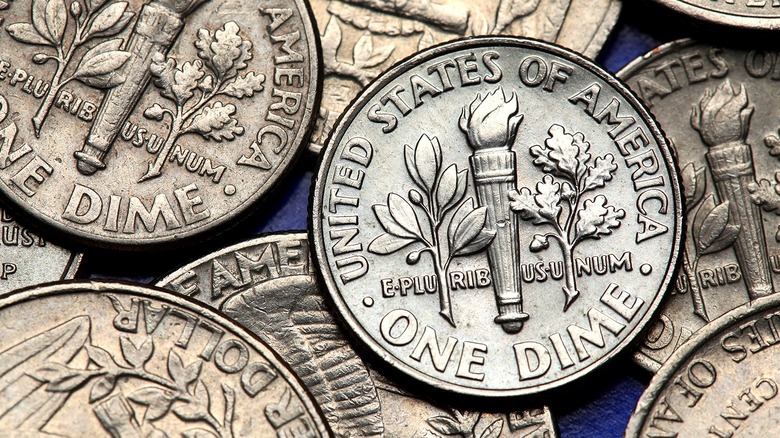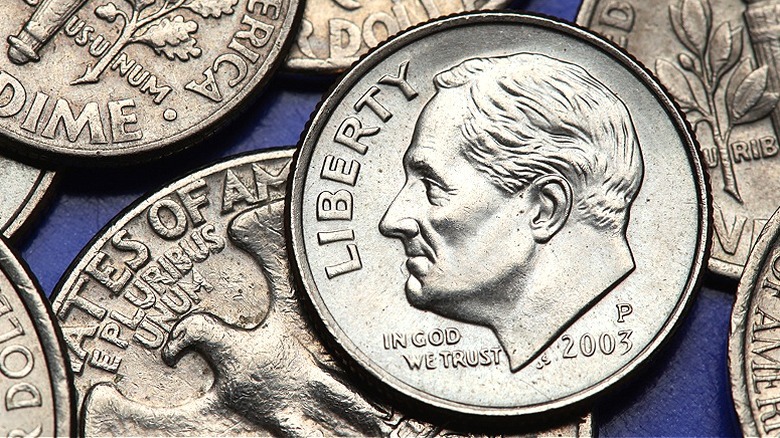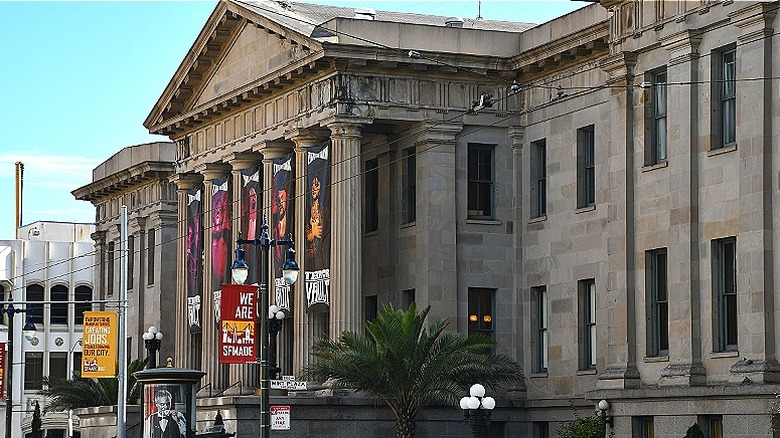A Rare Dime Missing A Special Mark Just Sold For An Absurd Amount Of Money
Brother, can you spare a dime — specifically, one worth half a million dollars? In October 2024, a rare dime sold for $506,250 in an online auction conducted by GreatCollections, a certified currency auctioneer site. The coin's sellers, a trio of sisters from an Ohio dairy farm family who otherwise wish to remain anonymous, come from a family that has suspected the dime's value to be far over 10 cents for some time.
The coin was minted in 1975, and is crucially missing its mint mark. One of only two incorrectly marked dimes of this kind in existence, the pair mysteriously went missing from a limited-edition, uncirculated set soon after. The Associated Press reports that in 1978, the sisters' mother and brother purchased one of the dimes for the then (and now) staggering sum of $18,200. The family clearly thought their purchase could prove valuable. Who knows if they knew it would be the ultimate spare change put away for a rainy day.
The dime was kept safe in a bank vault for decades, locked away from family members and coin collectors alike. Only after inheriting the coin due to a recent death in the dime-holding family was the dime finally offered up to the auction block — and curious coin enthusiasts — alike.
The case of the missing mint mark
Part of what makes this pricey dime so special isn't what's on the coin, unlike the most valuable rare gold $20 coin minted in the United States or certain valuable Kennedy 50-cent coins. Instead, the "1975 'no S' proof dime" is prized for what it is missing: its mint mark. Almost every coin struck by the U.S. Mint is supposed to include an embossed letter on it, to signify where the coin was made. If you fish out some coins from your pocket (but maybe not your bank vault treasure trove), you may see coins marked with letters like P, D, S, and W. A "P" mint mark means the coin was made in Philadelphia, an "S" in San Francisco, a "W" in West Point, and a "D" in Denver.
There is an element of quality control to this practice, but there have been some years when mint marks were expressly forbidden to keep coin-obsessed collectors from hoarding specially marked coins. The Coinage Act of 1965, for example, eliminated mint marks on coins for a handful of years in an effort to keep desperately needed coins made with precious metals in circulation.
In the case of two extremely rare 1975 "No S" dimes, they were struck as part of a proof set, or set intended only for collectors. However, because of an error with proof die handling, the "No S" dimes are just that: missing their "S" mint marks, and therefore, extra valuable to collectors.
More than a 10-cent mystery
In another time, you could pick up a dime novel with less mystery packed into it than the dime worth $506,250. Who first noticed that only two coins out of 2.8 million pressed for 1975 collectors' sets were missing a tiny "S" under President Roosevelt's profile? And how did those coins get into collectors' hot little hands in the first place?
One popular possibility in coin-collecting circles include the proof presses being stopped soon after the mistake was discovered at the mint. The juicier conjecture, however, is that the rare coins were made missing their "S" deliberately, in a sinister — and smart — way to drive up their value. Even Ian Russell, the co-owner of GreatCollections and the big-money dime's auctioneer, kept some secrets on the coin's behalf.
According to Russell, via the AP, the selling sisters' brother reached out to him seven years ago to inquire about one day selling the coin. Russell kept mum, and after said brother passed the coin on to his sisters, they, too, reached out to Russell to assist with their sale. Whatever the real story behind this deluxe-value dime truly is, news of its sale will certainly inspire some couch-cushion searching to find any valuable coins that might be lying around. A coin that misses its mint mark just might hit the mark when it comes to striking it rich.


